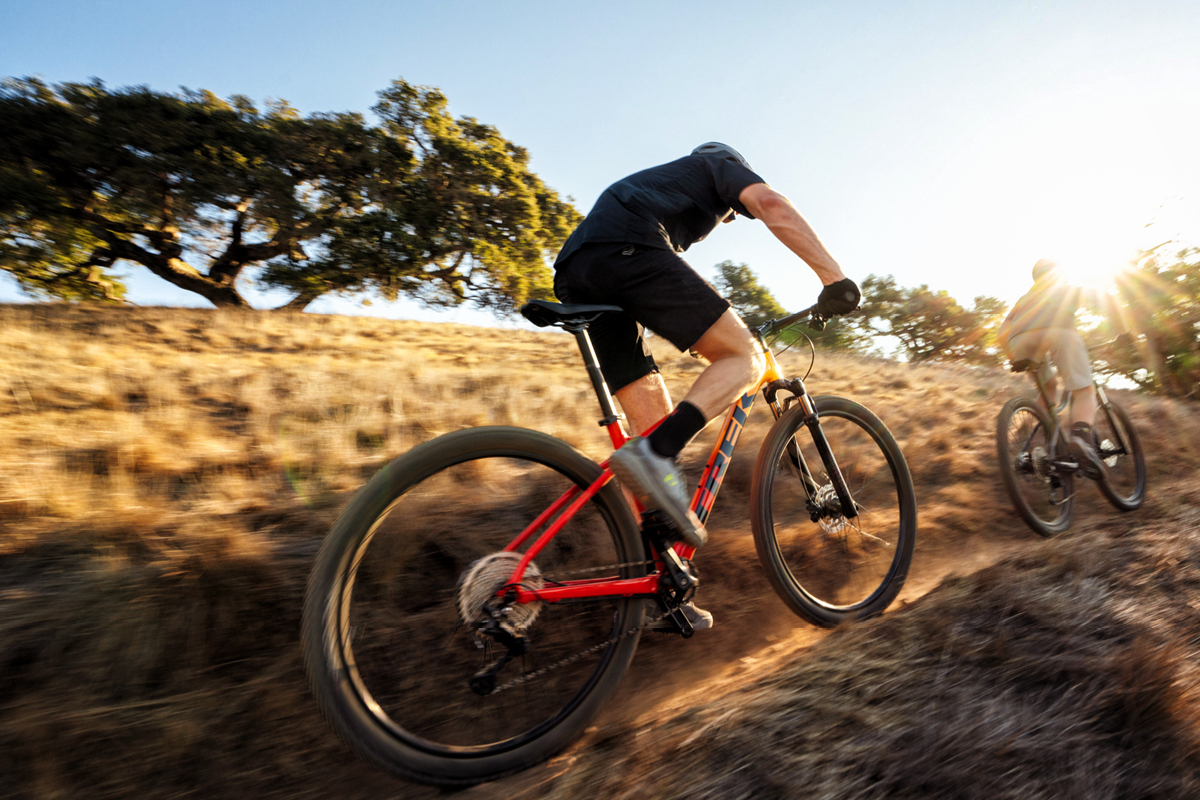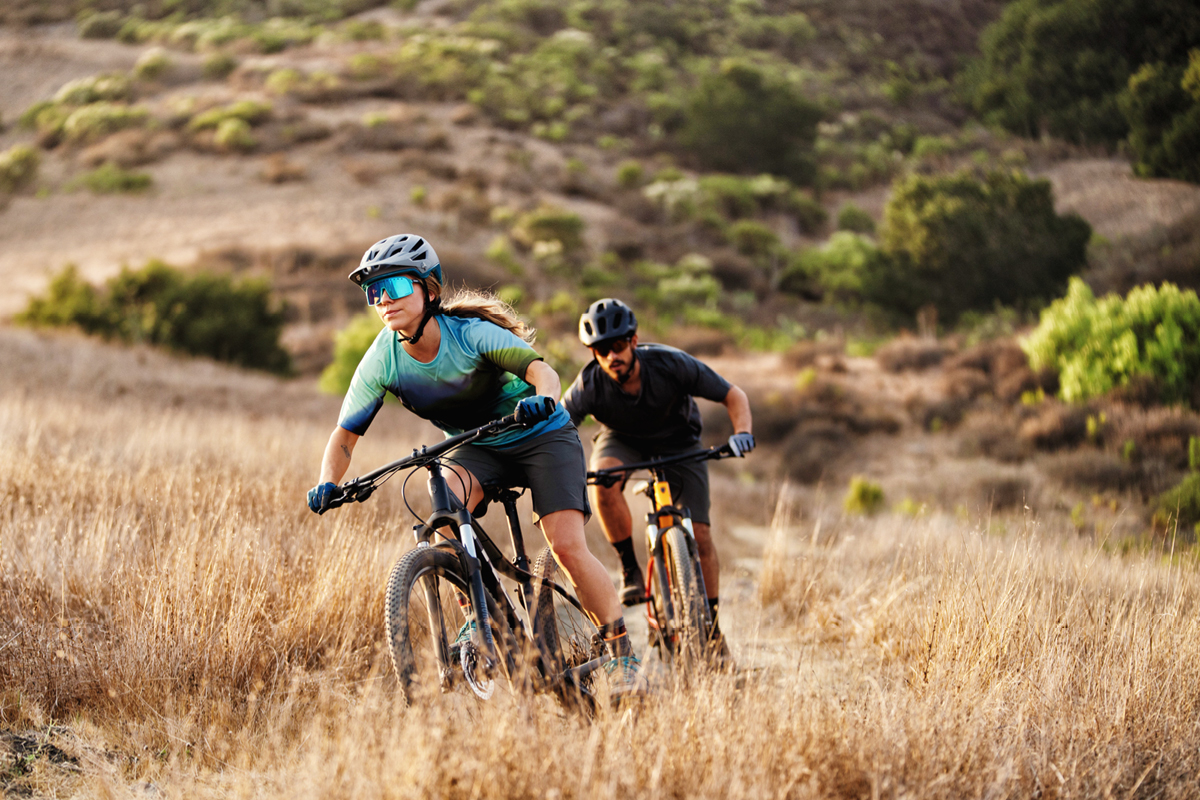Most mountain bikers encounter a wide variety of terrain out on the trails, and learning how to use all of your gears properly can help you tackle bigger climbs, take on longer rides and make the most out of every session.
So, how do you know when you’re in the right gear? And how do you know when you should switch into a harder or easier one? Let’s start with the basics.
Most mountain bikes are equipped with two shift paddles on each side of your handlebars. The paddles on the right control the rear derailleur and the paddles on the left control the front derailleur. Note: Some mountain bikes have just one chainring in front and a wider spread of gears in the rear, which eliminates the need for a front shifter or front derailleur.
When you push these shift paddles, you move your chain from gear to gear. Shifting your front derailleur (left hand) results in bigger changes in gearing, while shifting your rear derailleur (right hand) results in smaller gear changes.
Right hand – shifting the rear derailleur between cogs (smaller adjustments)
Your right shifter controls your rear derailleur, which shifts the chain across cogs in your cassette. In a cassette, the smaller-size cogs are actually the harder, faster gears and the bigger cogs are the easier, slower gears.
By pushing the smaller shift paddle, the rear derailleur shifts the chain to a smaller cog – a harder but faster gear. Pushing the bigger shift paddle will shift the chain to a bigger cog – a slower but easier gear.
Left hand – shifting the front derailleur between chain rings (bigger adjustments)
Drivetrains with a single front chainring are becoming more and more common, so your mountain bike might not have a front shifter (and that’s A-OK – but you can skip this section).
If your mountain bike does have a front derailleur, you’ll use your left shifters to move the chain between chainrings attached to your crankset. Shifting with your left hand will cause more dramatic changes in gearing and can be really helpful when you need to make a big gear adjustment quickly.
Your left-hand shifters have the opposite effect of your right-hand shifters, so pressing the bigger paddle will push the chain up to a bigger chainring – a harder gear. A harder gear takes more effort to pedal, but you’ll move further with each pedal stroke.
Pressing the smaller paddle will pull the chain down to a smaller chainring – an easier gear. This makes pedalling easier, but you won’t move as far or as fast.
Use the smaller chainring – or the easiest gear – when riding uphill. Use the bigger chainring – or the hardest gear – when you want to pedal hard to cover a lot of ground fast.
How to avoid cross-chaining
If you have a front derailleur, you want to avoid being in the hardest gear on one shifter and the easiest gear on the other. Cross-chaining puts a lot of strain on the chain and often causes it to rub against the front derailleur. This makes a lot of irritating noise and can be rough on your gears.
How to find the best gear
There’s no recipe for the perfect gear combo – it’s really a matter of personal preference. Don’t be afraid to play around to find the most comfortable and efficient rate of pedalling – or ‘cadence’ – for you.
Like we mentioned earlier, shifting your front derailleur (left hand) results in more noticeable changes in gearing, while shifting your rear derailleur (right hand) results in smaller gear changes. With practice, you’ll find that front shifting is helpful for big changes in elevation and rear shifting is good for fine-tuning your gearing until you’re pedalling at a rate that’s comfortable for you. Next time you’re out on the trail, try actively looking ahead and anticipating when to shift so you can be in the right gear before you get there.
Just remember – if it feels too hard to turn the pedals over, you probably need to shift into an easier gear. If you feel like you’re spinning out and not really going anywhere, try shifting into a harder gear.
Pro tip: pedal lightly while shifting!
You need to keep pedalling to be able to shift, but shifting works best (and is the smoothest) when you’re pedalling lightly. If you’ve got a lot of pressure on the pedals when shifting, the gear change tends to be clunky and abrupt. This is especially important on hills – so if you see a hill coming up, shift to an easier gear before you start climbing! And if you need to shift into easier gears as you climb, try to reduce the amount of pressure you’re putting on your pedals as you do so.
Want some in-person advice?
Head to your local Trek retailer to learn more and get the most out of every ride.

About the Author: Trek
Our mission: we build only products we love, provide incredible hospitality to our customers, and change the world by getting more people on bikes.





